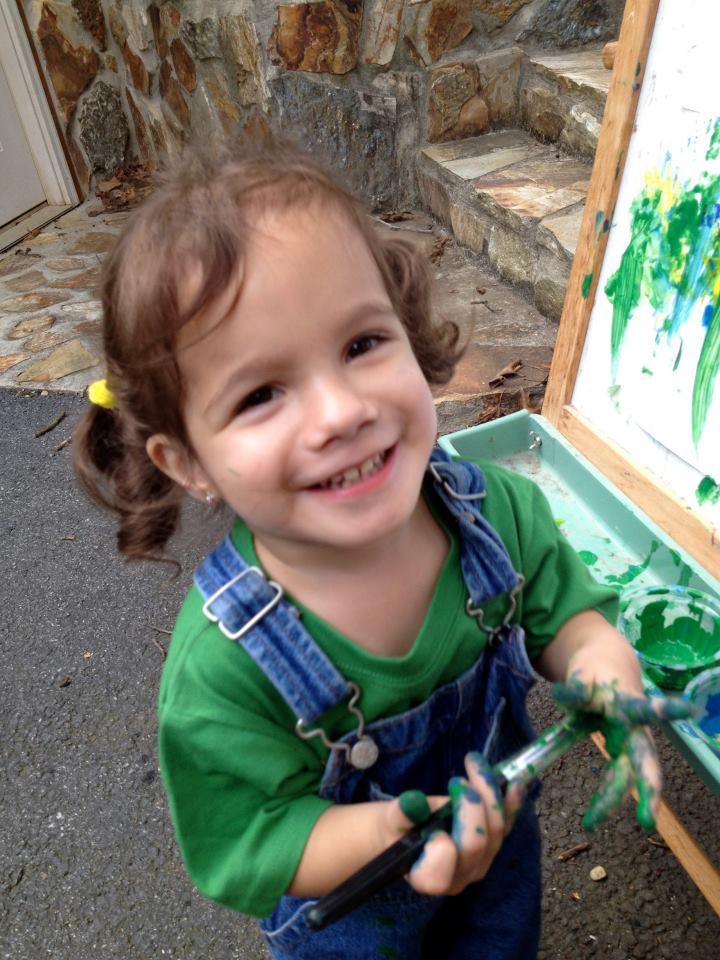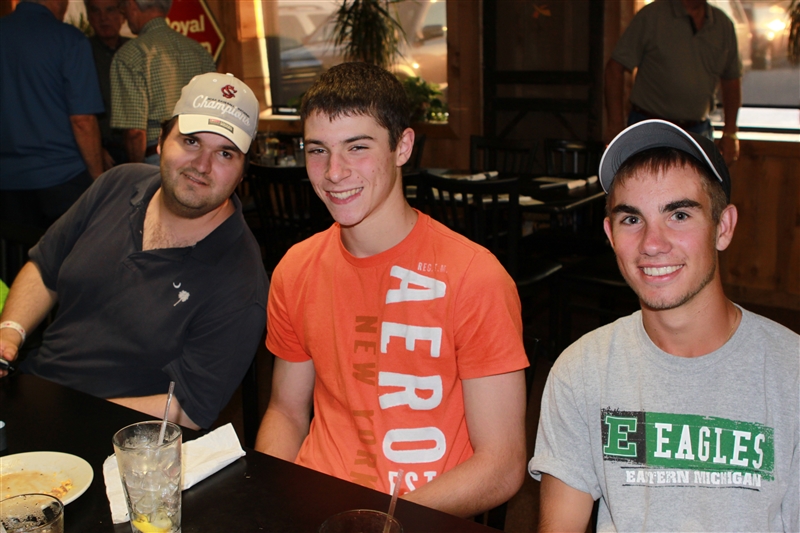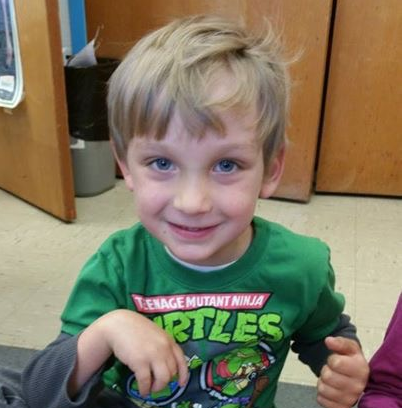Learn More About Pediatric Stroke
Pediatric Stroke Awareness – Everything you need to get started! – Click here for Fact Sheet, Awareness Month Ideas, How to Host a Pediatric Stroke Event, How to Share Your Child’s Story, Proclamations , Videos, and more. Learn more about Pediatric Stroke Awareness and what you can do to share our message that Kids Have Strokes, too.
A Few Facts About Stroke in Infants, Children, Young Adults and Before Birth
- Stroke can occur before birth, in infants, children and young adults.
- Risk of stroke is highest in the first year of life and peaks during the perinatal period (a few weeks before and after birth).
- Perinatal arterial ischemic stroke is the most common form of stroke in children.
- Perinatal stroke occurs in 1 in every 2800 live births. This incidence is likely to be an underestimate.*
- You may also hear terms like fetal stroke, prenatal stroke, and in utero stroke. Your doctor may refer to a stroke that occurs between birth and one month of age as a neonatal stroke.
- Sixty percent of infants with a stroke diagnosis have specific symptoms such as recurrent focal seizures in the first three days of life. Their stroke will most likely be identified early.
- However, forty percent of infants with early stroke do not have symptoms and the stroke is recognized later with delays in movement, development, learning, or seizures.
- The risk of stroke from birth through age 19 is approximately 5 per 100,000 children.
- Perinatal, neonatal, infant and childhood stroke are some of the most common causes of hemiplegia, hemiparesis, or hemiplegic cerebral palsy in children. Sixty percent of the children who survive a stroke will have permanent neurological problems.
- We’re sad to report that stroke is one of the top 10 causes of death in children between the ages of 1 and 19 years.
- Stroke happens as often as brain tumors in children.
My Baby Isn’t Using One Hand
- A child who favors one hand, leaves the other hand in a fist or doesn’t bring both hands together during play needs to be referred to an early intervention program and a pediatric neurologist for further testing.
- Delays in early milestones – rolling, sitting, pulling to stand, crawling, and walking – are additional reasons for evaluation.
- A child with early stroke may be unwilling to bear weight on one leg or may point the toes on that foot or walk on tip toe.
- The stroke diagnosis is confirmed with ultrasounds and MRI.
Perinatal Stroke – Get the Facts
- A perinatal stroke occurs between 22 weeks of pregnancy and 1 month after birth.
- Perinatal strokes are often missed because the signs and symptoms are subtle.
- When a baby has a stroke, the signs may not be noticed for months to years.
- In most cases, a cause cannot be found.
- For perinatal strokes, the overall risk for another stroke is very low, less than one percent.
- An ischemic stroke is the most common type of stroke before the age of 1 month.
- Other names for a stroke before birth include: a fetal stroke, a prenatal stroke, and an in-utero stroke.
- A stroke just after birth may also be called neonatal stroke or newborn stroke.
Perinatal Stroke Signs and Symptoms
- Newborns may or may not show early signs of stroke.
- The most common early sign is seizures. You may notice
- A rhythmic twitching of the face, arm or leg and/or
- Pauses in breathing along with staring
- As your child grows older, you may notice these physical symptoms:
- A preference for using one hand over the other before age 18 months
- Decreased movement or weakness on one side of the body
- Seizures
Diagnosing a Perinatal Stroke
Some of the tests doctors may use to diagnose your baby’s stroke are:
- Head Computed Tomography (CT).
- Magnetic Resonance Imaging (MRI) which may require medicine for sedation
- Ultrasound
- Electroencephalogram (EEG) may be done if the doctor suspects seizures
- Electrocardiogram (ECG or EKG) may done if a heart problem is present or suspected
- Blood samples may be taken to check for blood clotting problem
- Other tests that the medical team thinks are necessary
Treatment of Perinatal Stroke
Doctors may treat the baby at the time of the stroke with:
- Medicines, called anticonvulsants, to control seizures
- Methods to control body temperature, hydration, and blood sugar
- The doctor may manage brain pressure
- Surgery may be needed to treat a hemorrhagic stroke
Pediatric stroke survivors may develop stroke-related disabilities
Some, but not all children who’ve had a perinatal stroke or a stroke during childhood may develop:
- cerebral palsy (difficulty moving a part of his or her body), usually hemiplegia or hemiparesis
- epilepsy (seizures),
- speech and language difficulties
- sensory differences,
- visual and hearing problems,
- cognitive differences (learning disabilities)
- difficulty with paying attention (ADD or ADHD)
- behavioral or emotional challenges
Children often receive occupational and physical therapies for decades to help them learn functional skills of daily living and increase movement if they’re experiencing motor difficulties. Children with epilepsy usually take medication to stop or reduce seizure activity. Special educational programs may address learning and behavioral differences.
Additional Information About Pediatric Stroke
Interview with Dr. Heather Fullerton: Treating Stroke in Newborns and Children
See Resources in Your State for local pediatric stroke resources
About Pediatric Stroke – Signs and Symptoms
A Family Guide to Pediatric Stroke
Pediatric Stroke Support Organizations
The following organizations provide support to families of pediatric stroke survivors.
Children’s Hemiplegia and Stroke Association – support, information, advocacy, awareness – founded in 1996
Children’s Hospital of Philadelphia Pediatric Stroke Program – support groups for CHOP patients
University of Colorado Pediatric Stroke Parent Support Group
Canadian Pediatric Stroke Support Association
HemiChat – a parent led UK charity supporting babies, children and young adults living with hemiplegia
HemiHelp – a UK based charity for children and young people with hemiplegia
Sources
Calgary Pediatric Stroke Program. Pediatric stroke: Definitions and terminology
American Heart Association. Strokes can happen at any age. 2014
National Institutes of Health. What is a stroke? 2014
American Heart Association. Facts knowing no bounds: Stroke in infants, children and youth. 2013
Kirton, A. Stroke in children. 2013
Kirton, A., deVeber, G. Life after perinatal stroke. Stroke. 44: 3265-3271. 2013
The Children’s Hospital of Philadelphia. Pediatric Stroke. 2013
Go AS, et al. AHA Statistical Update, Heart Disease and Stroke Statistics – 2013, A Report from the American Heart Association. December 12, 2012.
American Heart Association. Stroke risk factors. 2012
American Heart Association. Types of stroke. 2012
Tsze, D.S., Valente, J.H. Pediatric stroke: A review. Emergency Medicine International. 2011
Centers for Disease Control, WISQARS Database, Twenty Leading Causes of Death by Age Group, United States – 2010
Agrawal N, Johnston C, Wu Y, et al. Imaging Data Reveal a Higher Pediatric Stroke Incidence Than Prior U.S. Estimates. Stroke. 2009; 40:3415-3421.
Amlie-Ledfond C, Sebire G, Fullerton HJ. Recent developments in childhood arterial ischemic stroke. Lancet Neurol. 2008;7: 425.
Roach ES, Golomb MR, Adams R, et al. Management of Stroke in Infants and Children: A Scientific Statement From a Special Writing Group of the American Heart Association Stroke Council and the Council on Cardiovascular Disease in the Young. Stroke. 2008;39:2644-2691.
Lo W, Zamel K, Ponnappa K, et al. The cost of pediatric stroke care and rehabilitation. Stroke. 2008;33:161-65.
Gardner MA, Hills NK, Sidney S, Fullerton HJ. The Direct Costof Pediatric Stroke in a Population-Based Cohort (abstract). Annals of Neurolog. 2008;64(suppl 12):S135.
Sofronas M, Ichord RN, Fullerton HJ, et al. Pediatric Stroke Initiatives and Preliminary Studies: What Is Known and What is Needed? Pediatr Neurol. 2006;34:442.
Kirton A, deVeber G. Cerebral Palsy Secondary to PerinatalIschemic Stroke. Clin Perinatol. 2006;33:367-386.
Kleindorfer D, Khoury J, et al. Temporal trends in the incidence and case fatality of stroke in children and adolescents. J Child Neurol. 2006;21:415– 418.
Roach ES, Riela AR, Wiznitzer M. Stroke in Children: Recognition, Treatment, and Future Directions. Seminars in Pediatric Neurology. 2000;7: 309.
Pediatric Stroke Research Articles
Genetic Risk Factors for Perinatal Arterial Ischemic Stroke – The apolipoprotein E polymorphism may confer genetic susceptibility for perinatal arterial ischemic stroke. Larger population-based studies are required to confirm this finding. 2013. California.
The Pediatric Stroke Outcome Measure – is an objective, disease-specific outcome measure containing 115 test items suitable for newborn to adult ages. The PSOM measures neurological deficit and function across 5 subscales. 2012. Canada.
Imaging Data Reveal a Higher Pediatric Stroke Incidence Than Prior US Estimates
Pediatric Stroke Guides, Fact Sheets and Books
* This incidence is still likely to be an underestimate because it is based largely on retrospective cohort studies relying in part on administrative database search strategies, and does not include all cases of cerebral sinovenous thrombosis.









